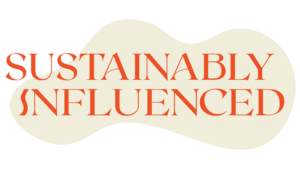What Is “Underconsumption” and Why Is It Trending?
Bianca Foley
In recent week’s social media has been awash with a whole new trend. TikTok has a new microtrend every few days but this is one that we can get behind and seeing as we live in an age where hyper-consumption can seem like second nature.
The 2010’s and early 2020’s have seen the rise in popularity of influencers who use their platforms to promote new releases and products, however in what seems to be a wave of pushing anti-capitalism; many Gen-Z creators are forgoing the hauls, in favour of sharing content that focuses on spending less, using what you have and essentially asking the question, would influencers have so much if they weren’t selling it to their followers?
Content entitled “Normal consumption core” and “Underconsumption” are trending and for good reason. But what does it mean? Underconsumption, simply put, is the means of consuming products, goods or services at a rate below that of their supply. Unlike the traditional consumerist mentality, which encourages constant buying to keep up with trends and appearances, underconsumption promotes the idea of valuing what you already own. Which leads us to ask, is this content merely a trend or is it a truer depiction of normal life?
@kira.knapp on TikTok
What Are The “Core” Elements of Underconsumption?
At the heart of the underconsumption trend is the principle of mindful consumption. This involves being deliberate about what and when to buy, focusing on the necessity, quality, and sustainability of each purchase. As mentioned above, unlike the traditional consumerist mentality that promotes incessant buying to keep up with the latest trends, mindful consumption encourages individuals to think critically about their needs and the impact of their consumption choices. It challenges the notion that happiness and satisfaction come from owning the newest or most popular items, instead promoting a more thoughtful and intentional approach to purchasing. This trend counters the heavy consumerism often glorified on social media, where influencers frequently showcase a revolving door of new products, encouraging their followers to do the same.
Underconsumption is not about looking shabby or sacrificing personal style; it’s about prioritising practicality and utility over mere appearance. This movement emphasises the value of items based on their function and longevity rather than their conformity to fleeting fashion trends. On TikTok, these creators are breaking free from the cycle of chasing transient fashion trends and instead are showcasing items that have served them well over time.
A key aspect of this trend is the celebration of everyday items that might not be new or fashionable but are nonetheless highly functional. TikTok creators often showcase well-used shoes, make-up and almost empty perfume emphasising their practicality and effectiveness over their age or brand-new appearance.
The “Deinfluencing” Movement
But “underconsumption” is nothing new, another movement preceded this particular trend deinfluencing movement on TikTok, led by creators like Heidi Kaluza, known on Instagram and TikTok as @therogueessentials, challenges the societal pressure to constantly buy new things. Creators like Heidi have been integral to breaking this cycle and these deinfluencers promote sustainability through authentic recommendations and practical advice, rather than pushing products.
Over the past year, a growing number of people have started to reconsider the products being promoted by influencers. The hashtag #Deinfluencing, which now boasts over a billion views on TikTok, epitomises this shift. This user-driven movement features self-proclaimed deinfluencers who actively discourage their audiences from succumbing to overhyped products, marking a significant change from the typical “swipe up” and “buy now” culture.
@michelleskidelsky on TikTok
Aligning with Broader Movements
One point we can really focus on in this is that that underconsumption seamlessly aligns with broader sustainability and minimalism movements, reinforcing the principles of both.
It inherently supports sustainability conversations by emphasising reduced waste and a lower environmental impact. The trend encourages individuals to make more conscious choices about their purchases, opting for items that are durable and have a longer lifespan.
Minimalism, which rose to popularity in the past decade may be a distant relative to the current trend, but in essence advocates for fewer, but more meaningful possessions. Minimalism emphasises the importance of owning only what is necessary and valuable, both in terms of functionality and personal significance.
The underconsumption trend represents a significant cultural shift in consumer habits and environmental awareness. Looking to the future, this trend has the potential to fundamentally change social media culture. As influencers and creators continue to advocate for sustainability and minimalism, we may see a decline in the promotion of constant consumption and a rise in content that celebrates mindful living. This shift could inspire a broader audience to rethink their consumption habits, ultimately bringing about a more sustainable and conscious way of living.
Share This Story
Related Posts

Is Your Home Making You Sick? Why It’s Time to Reset Your Cleaning Routine
Is Your Home Making You Sick? Why It’s Time to Reset Your Cleaning Routine How indoor air pollution and toxic products are harming your health

Did ChatGPT Play a Role in Fueling California’s Wildfires?
Did ChatGPT Play a Role in Fuelling California’s Wildfires? Alice Hartwell Credit: Unsplash Early 2025 headlines were dominated by the devastating wildfires that swept through

Is Outlet Shopping Actually Sustainable? Let’s Discuss
Is Outlet Shopping Actually Sustainable? Bianca Foley Outlet shopping and discount designer stores have long been the ultimate fashion treasure hunt—scoring past-season gems at a

Sustainable Bakeries to Visit in the UK
(Image credit: Mix Interiors) Sustainable Bakeries to Visit in the UK There’s nothing more comforting than indulging in freshly baked goods. But what if you
